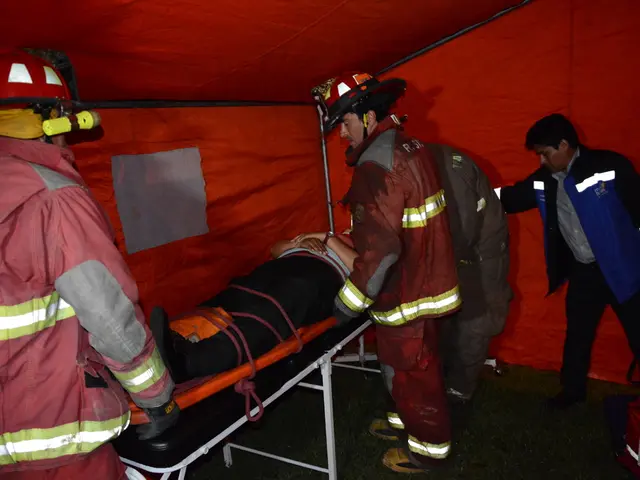Distinguishing Between Age Spots and Skin Cancer: Recognizing Key Differences
Age Spots and Skin Cancer: What You Need to Know
As you age, it's normal for your skin to show some changes, such as the appearance of spots. Some of these spots resemble skin cancer, leading to confusion. Here's a breakdown of the differences between age spots and skin cancer, symptoms, diagnoses, and treatments for both conditions.
Age Spots vs. Skin Cancer – What's the Difference?
Both age spots and skin cancer can be misleading, but there are key differences to be aware of:
Age Spots- Derived from excess melanin production due to sun exposure- Generally harmless and asymptomatic- Features such as flat, smooth, yellow, brown, or gray, well-defined borders, and sizes ranging from millimeters to centimeters- Located on sun-exposed areas like the face, hands, shoulders, feet, arms, and back
Skin Cancer- A type of cancer caused by UV radiation, other environmental and genetic factors damaging skin cells- Harmful and potentially life-threatening if left untreated- Symptoms vary based on the type of skin cancer but may include asymmetrical, changing size, color, or shape, multiple colors, rough or scaly patches, pain, itching, or bleeding- Common types include basal cell carcinoma, squamous cell carcinoma, and melanoma
Other Considerations
Actinic keratosis is a precancerous growth that appears similar to age spots. If left untreated, it can develop into skin cancer.
Can Age Spots Turn into Cancer?
No, age spots cannot transform into cancer. However, actinic keratosis could evolve into skin cancer if not treated.
Comparison of Symptoms
| Age Spots | Skin Cancer / Actinic Keratosis ||---------------------------|---------------------------------|| Flat, smooth | Rough, scaly || Yellow, brown, or gray | Multiple colors || Defined borders | Irregular borders || Tend to be uniform in color | May be multiple colors || Usually asymptomatic | Sensitivity or discomfort || Non-changing | Changes in size, color, or shape|
When to Contact a Doctor
If you notice any unusual changes on your skin such as asymmetry, changing size or color, discomfort, or lesions that refuse to heal, it's best to consult a healthcare professional. Early detection can increase your chances of successful treatment.
Diagnosis
A doctor or dermatologist will examine the spot and assess its appearance, texture, and placement. If there's uncertainty, a skin biopsy may be performed to test for conditions like skin cancer or actinic keratosis.
Treatment
Age spots usually do not require treatment, but cosmetic options like creams, lotions, chemical peeling, laser therapy, and microdermabrasion are available. For actinic keratosis and skin cancer, treatment depends on factors like the type and stage of cancer and can include surgical excision, radiation therapy, chemotherapy, immunotherapy, or systemic medication.
Summary
Being able to identify the differences between age spots, actinic keratosis, and skin cancer can help ensure early detection and treatment of potentially harmful conditions. When in doubt, consult a healthcare professional for guidance.
- In oncology, melanoma is a type of skin cancer caused by UV radiation and other factors, known for its potential life-threatening outcomes if left untreated.
- Dermatology specialists often treat various skin conditions, such as age spots, skin cancer, actinic keratosis, and otherskin cancer, ensuring health and wellness through proper skin care and management of Medical conditions.
- Healthcare professionals recommend regular skin checks for seniors, particularly those who have a history of sun exposure, as they are at a higher risk of developing skin cancer and age spots.
- Science continues to explore the complexities of skin conditions like melanoma and age spots, seeking new treatments and diagnostics to improve the quality of life for those affected.
- It's important to consult a dermatologist if you notice any skin changes or symptoms such as asymmetrical moles, changing size, color, or shape, or lesions that refuse to heal, as early detection can significantly increase treatment success rates for conditions like skin cancer and actinic keratosis.








